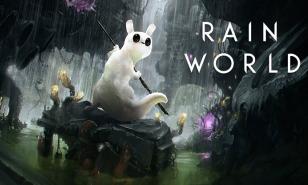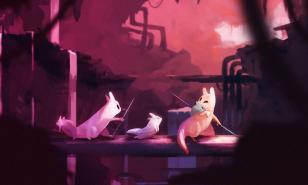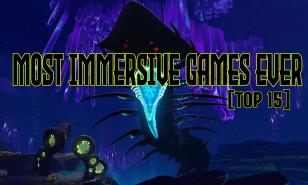[Top 10] Rain World Best Lizards To Tame (Early To Late Game)
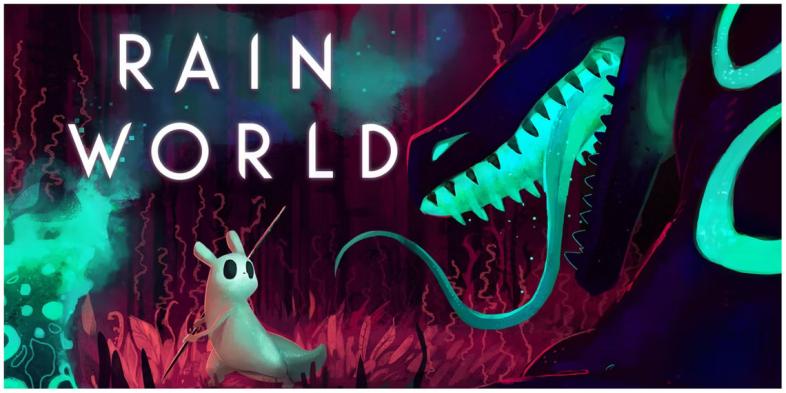

A tamed pink lizard standing with the slugcat
In Rain World, you exist at the very bottom of the food chain. A small slugcat destined to be a meal for one of the many predators over and over again. In this cruel and unforgiving world, making a lizard-friend can be a life-saver.
Lizards are one of the most common threats you will encounter - they lurk in virtually every area of the game, constantly surprising you with new and deadly mechanics. But did you know that you can turn the tables and harness them as a protector and friend? Such a tamed lizard can protect you from any other predators in the game and remain a loyal companion throughout.
How to Tame Lizards?
All lizards can be tamed in the same way, though some present greater challenges (and also benefits) than others. Lizards taming operates on a mechanic known as Reputation. You, as the slugcat, must build your reputation with the lizard to a sufficient level.
Food is the primary means of taming, as you can feed the lizard a certain amount which will result in raising your Reputation sufficiently to make the lizard friendly. A tame lizard will follow you, hibernate with you, and protect you. The amount of food needed will depend on the type of lizard.
1. Green Lizard (Early Game)
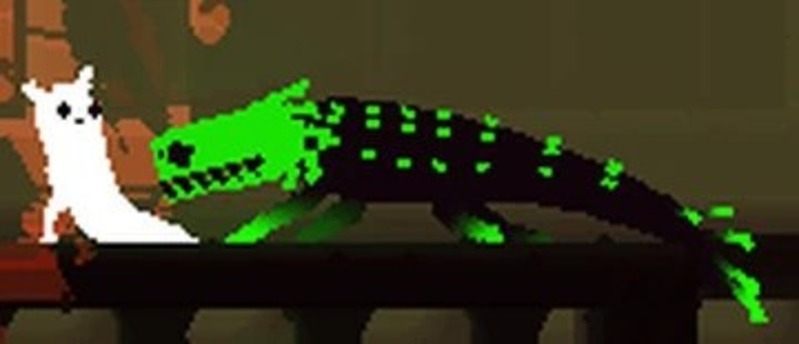
A green lizard lurking behind the slugcat
Green lizards are the first lizard a new player will encounter, living in the Outskirts and surrounding areas. During the start, as you learn the game, they will probably be one of the most frequent sources of trouble. However, their low mobility makes them easier to evade than many other lizards, allowing you to tame them with lower risk of being eaten yourself.
Green Lizards are also great protectors, given that they have significantly high health. They also have a Charge ability, which lets them rush an opponent who might be trying to eat you. However, one of their bigger limitations is that they are unable to climb poles in the game, so you’ll have to find alternative routes for it to follow you.
Green Lizard strengths:
- Great protector, due to its large amount of health
- Easy to tame, since it cannot climb poles
- Charge attack ability, allowing it to rush down enemies
- Great starting option, as readily available in beginning locations
You can tame this lizard by exploiting its inability to climb poles. Climb up a pole and throw food to it below (with squidcadas being the easiest available food source for this). The lizard should only need to be fed 2-3 times before it becomes a companion.
Green Lizard Stats:
- Mobility: Poor
- Combat: Strong
- Taming difficulty: Moderate
2. Blue Lizard (Early Game)
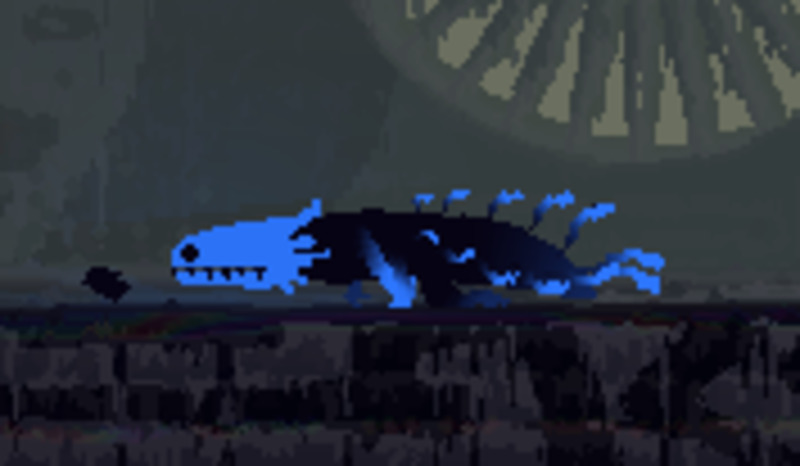
Blue lizards are also an early game lizard that a new player will encounter fairly quickly, appearing in most regions just outside the Outskirts, such as the Farm Array or the Industrial Complex. These lizards can be tricky to navigate around, as they have an ability which allows them to climb the background walls. Additionally, they have a very long tongue, which can surprise inexperienced players.
These lizards make for faithful companions given that they can climb walls, allowing them to follow the slugcat much more easily than many others. Their short-ranged attack ability also makes them highly effective diversions and quick protectors. That said, blue lizards cannot stand up to most other predators in combat for too long, as they have very low health, meaning that they are slain easily and need to be replaced frequently.
Blue Lizard strengths:
- Great companion, given strong ability to climb
- Easy to tame, since it requires very little food
- Tongue-launch attack ability, allowing it to grab opponents
- Early-game option, as abundant in starting regions
This lizard is relatively easy to tame as it only needs 1-2 feedings, with squidcadas being the most plentiful food around. Its tongue ability should also reduce the number of times that prey that the slugcat feeds to it escapes. Be careful in your approach though, as its mobility and tongue attack can quickly be directed towards you.
Blue Lizard Stats:
- Mobility: High
- Combat: Weak
- Taming difficulty: Easy
3. Pink Lizard (Early Game)
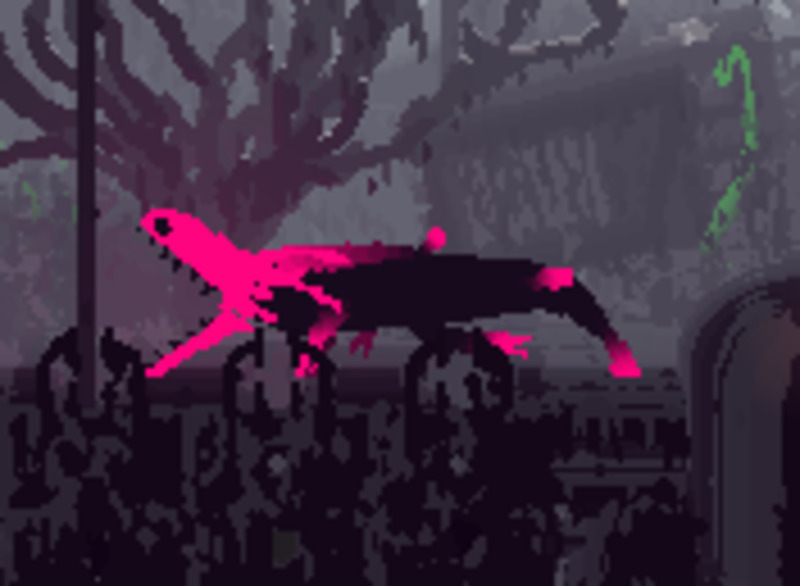
A pink lizard snaps its jaws
Inhabiting the beginning stages of the game, Pink lizards are a creature that a player will stumble upon early in the game, generally at the player’s peril. These lizards can be quite tricky to evade, given their ability to climb poles and even nab a player from midair. Beyond their pole-climbing, however, the pink lizard has no other talents or unique abilities.
These lizards make for well-rounded pets, as they can follow a player through many areas simply using their pole-climbing ability. Additionally, they are better fighters than blue lizards and on equal grounds with many others. Overall, the pink lizard isn’t too difficult to tame, and can make for a decent guardian.
Pink Lizard strengths:
- Good follower, given pole-climb ability
- Great value, as taming difficulty is low compared to combat / mobility abilities
- Early-game option, as inhabitant of starting regions
This lizard is not very difficult to make friendly as it requires 1-3 feedings, with squidcadas again being the most common food in its regions. It doesn’t have any special attacks, but its pole climbing ability makes run-and-throw-food the safest strategy. Alternatively, a ledge with no pole-access makes for a good place to toss food to it.
Pink Lizard Stats:
- Mobility: Moderate
- Combat: Moderate
- Taming difficulty: Moderate
4. White Lizard (Mid Game)
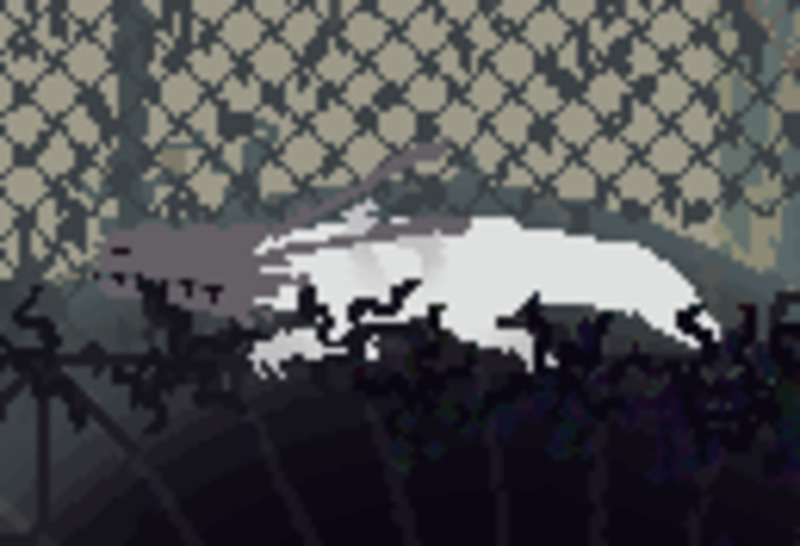
A deadly white lizard awaits its prey
Very similar in many aspects to blue lizards, white lizards are encountered in many mid game regions (Sky Islands, The Exterior, etc.) and can prove far more deadly than any lizards encountered before. These lizards can devour even seasoned players, as their camouflage ability is quick to punish a careless trespasser.
These lizards make for great protectors, as they can follow a player quite well with their climbing abilities. Further, they are excellent fighters due to their tongue-launching ability, which functions the same as a blue lizard, but with much farther range. Though, one drawback of the white lizard is its trickiness to tame, as it is a fierce opponent and requires more food than most.
White Lizard strengths:
- Excellent follower, given background climbing ability
- Good fighter, with long-range tongue-launch attack ability
- Solid mid-game option, available in many later locations
This lizard can be difficult to bring to heel, as it requires 2-4 feedings, and good food options in its inhabited regions are more limited. It also is an ambush predator, which makes finding a white lizard to tame without being eaten first a challenging affair. It can be lured into areas with greater qualities of food, like the Industrial Complex, but this can present its own obstacles.
White Lizard Stats:
- Mobility: High
- Combat: Strong
- Taming Difficulty: Moderate
5. Water Lizard (Mid Game)

A water lizard (also known as a salamander) runs across the landscape
Water lizards, as their name suggests, can be found in mid-game areas such as the Shoreline or the Drainage System. They are very nimble and able to navigate underwater quite easily, unlike every other kind of non-DLC lizard. Caught alone in the pipes or seas of Rain World, the slugcat will quickly find itself hard pressed to survive.
These lizards make for good companions, as they are very mobile in water, but also can climb poles when moving around on land. Despite being rather average in its combat skills, the water lizard can fight in the most diverse of regions due to its strong mobility. Water lizards share the tongue-launch attack too, albeit at a short range.
Water Lizard strengths:
- Exceptional follower, given pole-climbing and water-diving skills
- Good fighter, with tongue-attack option
- Strong Mid-game option, with lots of food to tame around
This lizard requires quite a bit of work to tame, taking 3-4 feedings before becoming friendly. Food is generally very available around it though, in the form of jetfish. Additionally, these jetfish double as means for the slugcat to escape if caught in a pinch during taming endeavors. Various sections of the Drainage System can be a little more sparse for food than other areas like the Shoreline.
Water Lizard Stats:
- Mobility: High
- Combat: Moderate
- Taming Difficulty: Moderate
6. Orange Lizard (End Game)
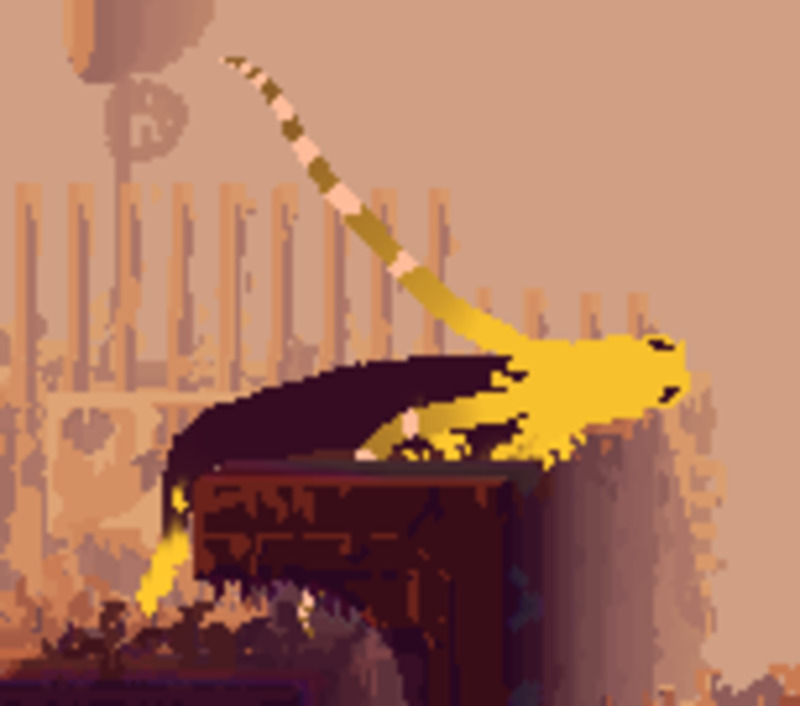
A yellow lizard alpha with its unique telephathic antennas
Orange lizards run in packs, working together to trap and dismantle prey, making them incredibly deadly. They are found in areas such as the Exterior, Farm Islands, and Sky Islands, and also have the unique appearance of antennas on their heads, suggesting their teamwork is through telepathy.
These lizards make for average companions when tamed individually, as they do nothing poorly, but nothing particularly well either. However, if one is able to tame an entire pack of these lizards, then they have a very strong advantage with the full power of the orange lizard’s teamwork at their disposal. Unfortunately, this is no small feat, as the tamed and untamed lizards fight and kill each other making taming multiples exceedingly hard.
Orange Lizard strengths:
- Strong fighter (in pack), given teamwork attacking
- Very quick, due to high movement speed
This lizard is only worth taming if one hopes to gain a whole pack, as each lizard takes 4-5 feedings of the usual squidcadas. Grappling worms can also be used and should frequently be nearby in these regions. An added challenge is that these orange lizards are in packs, so focusing on a single one to tame is quite hard.
Orange Lizard Stats:
- Mobility: Moderate
- Combat: Moderate
- Taming Difficulty: Very Hard
7. Black Lizard (End Game)
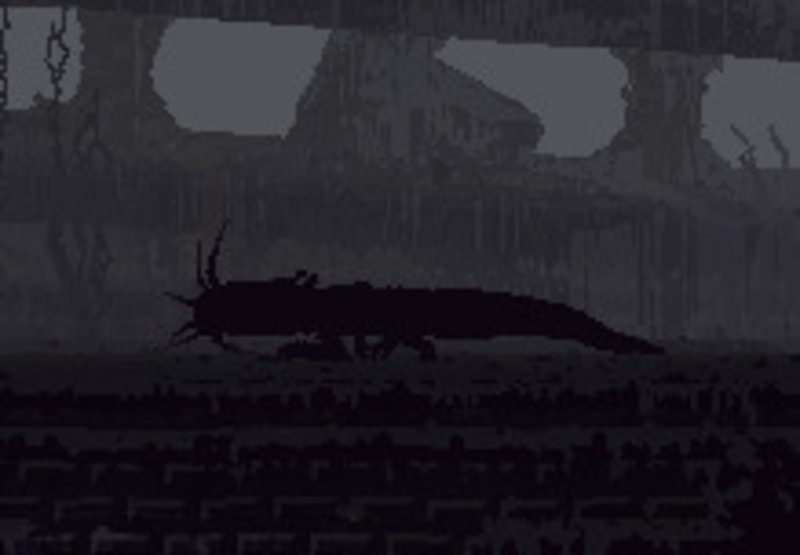
A black lizard (also known as a mole lizard) stalks through the darkness underground
Black lizards are denizens of the dark places in Rain World, often stalking the slugcat through places like the Subterranean. Their ears are very sharp and can pick up movement from far distances. However, beyond this, these lizards have no other unique traits and can be easily distracted by thrown objects.
These lizards make for decent pets, however they aren’t overly strong in combat or in movement/agility. When taking these lizards outside of their dark regions, they lose a good deal of their specialness, which is mostly their stealth in the dark and strong hearing. In a pinch though, these lizards will make dependable allies.
Black Lizard strengths:
- Able follower, equipped with pole-climbing abilities
- Strong hearing, able to detect enemies from afar
This lizard is rather difficult to tame, with 3-5 feedings being necessary to make it a companion. As such, given its lack of strong attributes, this lizard is only a good option if one is in a bind and needs a local protector in the dark tunnels, or if one is particularly fond of the species. Lantern mice are typically the easiest food source in these underground recesses.
Black Lizard Stats:
- Mobility: Moderate
- Combat: Moderate
- Taming Difficulty: Hard
8. Cyan Lizard (End Game)
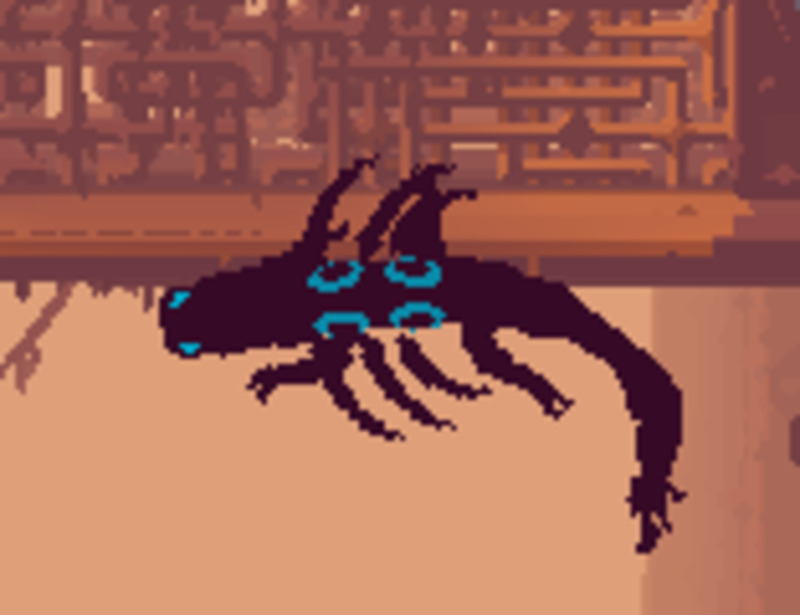
A nimble cyan lizard scuttles across the background
Cyan lizards are rare, as they are only encountered organically when playing in hard mode (as the Hunter), or on the small chance of being lineaged (spawned in when another enemy is killed). They are arguably the most mobile lizard in the game, as they can climb anything and also launch themselves! Additionally, their speed is very high, and they also have a short-range tongue-launch attack ability.
These lizards make for great protectors, easily able to keep pace with even a veteran player. Their combat ability is also advanced, with the launching ability enabling them to leap to a defense during surprise attacks. The cyan lizard’s health quantity is its only achilles’ heel, being merely moderate, whereas everything else was exceptional.
Cyan Lizard strengths:
- Exceptional follower, extremely nimble
- Great protector, able to launch its itself and use a tongue-launch ability
- Top end game option, being less difficult to tame
While rare, if this lizard is found, it is definitely a worthwhile endeavor to tame it, as only 2-3 feeding will be needed. Given its diverse capabilities (very mobile and great combat options), this makes its value per feed virtually unbeatable. If this lizard spawns through lineages, it can be anywhere, but in hard mode it is found across almost every larger region.
Cyan Lizard Stats:
- Mobility: Very High
- Combat: Good
- Taming Difficulty: Moderate
9. Train Lizard (Mid Game)
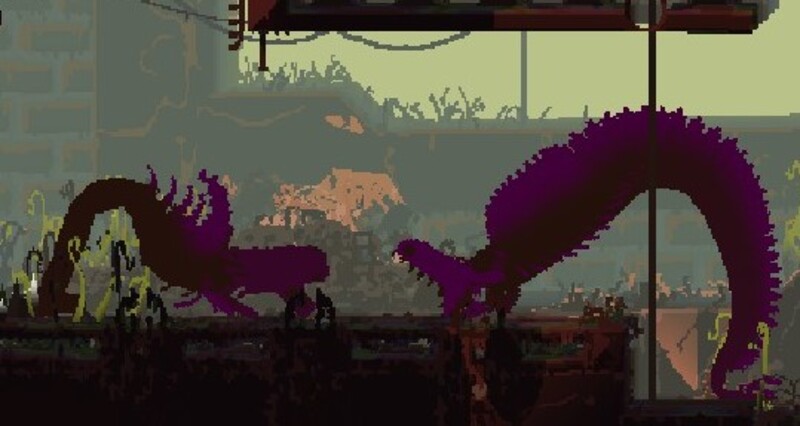
An enormous train lizard roaring a challenge
Train lizards are distinctive, being the largest lizard in the game, and usually should send any player running for cover (except, of course, you… an aspiring lizard-tamer). They shake the ground when they exercise their lunge attacks and cannot be avoided by sneaking due to their keen senses. It’s worth noting that they are only available in the DLC Downpour, and thus cannot be encountered in the base game Rain World.
Train lizards can go toe to toe with almost any other threat in the game making them extremely valuable once tamed. Its health is so high that the slugcat requires 10-12 spears just to kill it, and it is the fastest lizard in the game (on flat ground) with its charge attack. However, they cannot climb walls which makes them most effective in terrains with flatter surfaces or numerous platforms.
Train Lizard strengths:
- Strong durability, as high health
- Very fast, as can use a charge attack
- Good follower, able to climb poles (though not walls)
- Strong fighter, as bite does high damage
If a player has the DLC unlocked, then this lizard is a top prize, requiring 4-5 feedings to tame. This is a bargain for the abilities this lizard brings to the table, with few predators able to defeat it in combat. The train lizard only spawns in the Industrial Complex, making centipedes or even blue lizards a good option for taming purposes.
Train Lizard Stats:
- Mobility: Moderate
- Combat: Very Strong
- Taming Difficulty: Hard
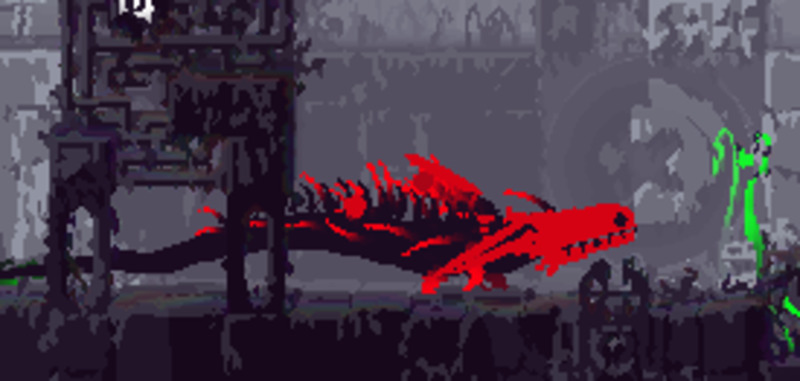
A lethal red lizard prowls its domain
Red lizards are at the top of the food chain, and can only be encountered through the lineage system (spawned after something else dies). A player knows when they have encountered a red lizard given that they likely met with an extremely quick and brutal end. Not only does the bite of the red lizard instantly kill the slugcat, but it can shoot projectiles (its spit) to stun opponents.
Red lizards are capable of killing any foe, even vultures, and make for the most valuable companion possible to obtain. These lizards do strong damage, have ranged attacks, possess keen senses (even able to see beyond the screen), and have a unique fearlessness (they never run, even from King Vultures). They are unable to climb walls, but still can use poles to follow the player.
Red Lizard strengths:
- Combat prowess, with high bite damage and projectile spit
- Good follower, able to climb poles (though not walls)
- Excellent enemy detection, due to very keen senses
The red lizard is the pinnacle of taming, but needs to be fed 7-9 times, which is very hard to pull off without being killed yourself. The red lizard can appear anywhere due to its necessary lineage spawning. Taming is best done from a wall which the red lizard cannot climb, though the slugcat should be mindful of the spit projectiles which may cause stunning.
Red Lizard Stats:
- Mobility: Moderate
- Combat: Very Strong
- Taming Difficulty: Very Hard
You may also be interested in:
- Log in or register to post comments
 Home
Home PC Game Trailers
PC Game Trailers News
News Menu
Menu



